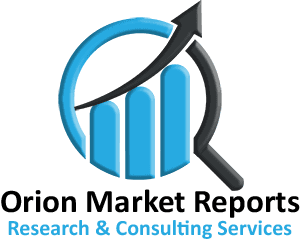Global Fuel Cell Vehicle Market Trends, Market Share, Industry Size, Growth, Opportunities and Market Forecast – 2022 to 2028
The global fuel cell vehicle market is anticipated to grow at a significant CAGR of 35.7% during the forecast period (2022-2028). Fuel cell vehicles are propelled by electricity generated onboard by passing hydrogen gas through a fuel cell stack. This fuel cell technology is capable of supplying power to both passenger and commercial vehicles. Additionally, the US Department of Energy has established guidelines for the use of hydrogen fuel cells in automobiles, and as a result, automakers are making significant progress in the improvement of fuel cell vehicles.
Car emissions have had a negative influence on the environment and human life; as a result, various government agencies are imposing strict vehicle emission rules. Fuel cell vehicles are expected to be in great demand in the market as they are zero-emission vehicles that meet government criteria. Over the forecast period, increased awareness among consumers about the impact of vehicle emissions on the environment, as well as the development of alternative power trains, is likely to propel the market forward.
Moreover, the growth of the fuel cell vehicle market is also aided by government financing for the development and installation of hydrogen filling facilities. The primary goal of developed-country governments is to design a strategic plan for the commercialization of fuel cell technology. This money will be used to help people buy fuel cell vehicles. By 2030, many countries hope to have a nationwide network of hydrogen refueling stations. Fast refueling is a benefit of hydrogen fuel cell vehicles. Over the forecast period, all of these factors are expected to drive the market’s expansion.
The market players are also contributing significantly to the growth of the market by the adoption of various strategies including mergers and acquisitions, geographical expansion, partnerships, collaborations, and new product launches, in order to stay competitive in the market. For instance-
- In September 2019, the I Hydrogen NEXT car was unveiled by BMW AG. The BMW Group is demonstrating its capabilities to complement its electrified vehicle division by demonstrating hydrogen-powered fuel cell vehicles.
- In February 2019, Ballard Power Systems announced the completion of rigorous testing at the Altoona Bus Research and Testing Center under a program established by the Federal Transit Administration on 40-foot and 60-foot Xcelsior fuel cell-electric buses (FCEBs) powered by Ballard FCvelo City-HD 85 kilowatt (kW) modules (FTA).
Market Coverage
- The market number available for – 2021-2028
- Base year- 2021
- Forecast period- 2022-2028
- Segment Covered-
- By Vehicle Type
- By End-User
- Regions Covered-
- North America
- Europe
- Asia-Pacific
- Rest of the World
- Competitive Landscape-Audi AG, Ballard Power Systems Inc., BMW Group, Daimler AG, and General Motors Co., among others.
Key questions addressed by the report
- What is the market growth rate?
- Which segment and region dominate the market in the base year?
- Which segment and region will project the fastest growth in the market?
- How has COVID-19 impacted the market?
- Deviation from the pre-COVID-19 forecast
- Most affected region and segment
- Who is the leader in the market?
- How players are addressing challenges to sustain growth?
- Where is the investment opportunity?
Global Fuel Cell Vehicle Market Report by Segment
By Vehicle Type
- Passenger Cars
- Commercial Vehicles
- Buses &Coaches
By End-User
- Private
- Commercial
The report will be delivered within 48-72 hours after payment confirmation
